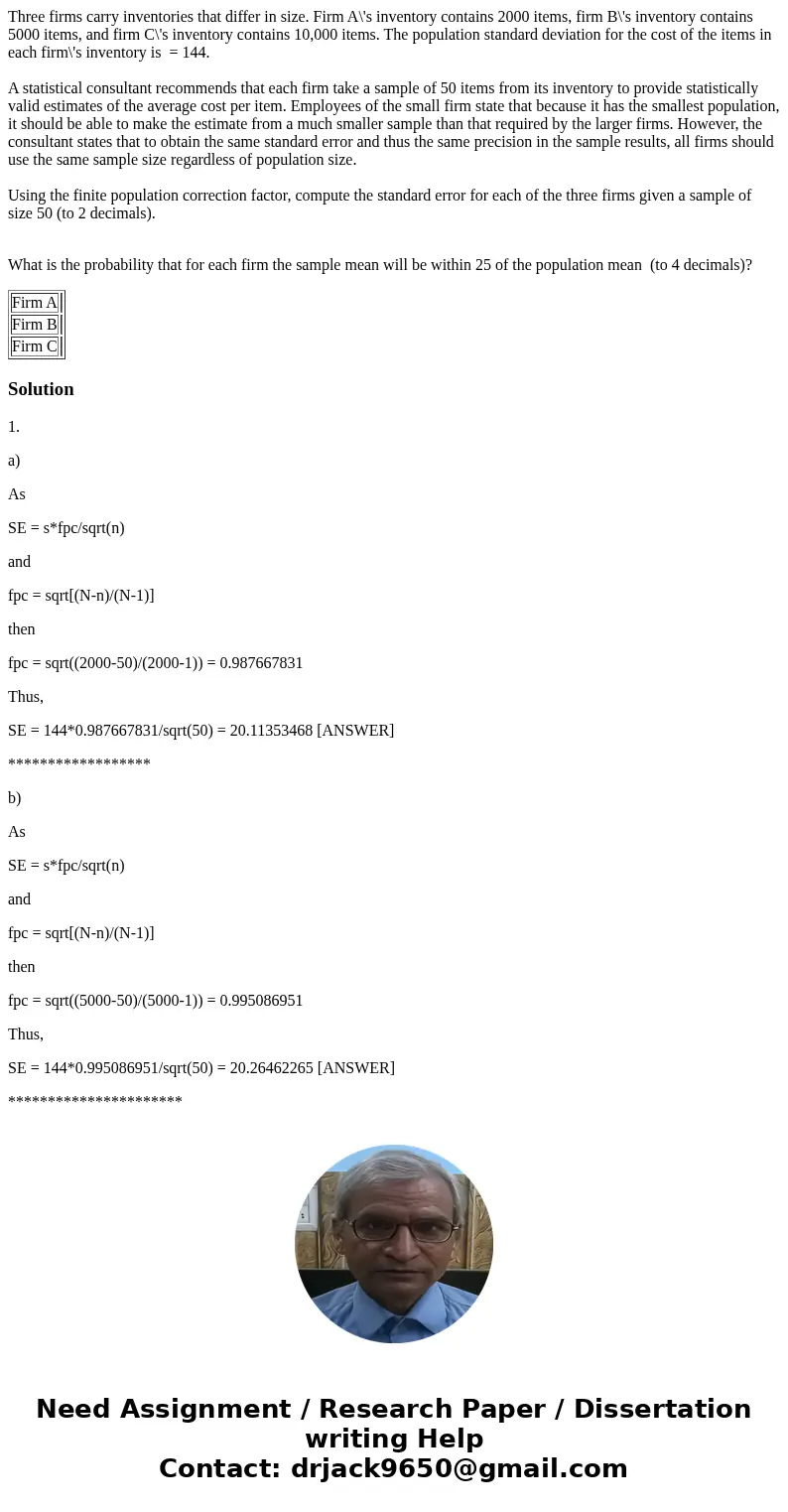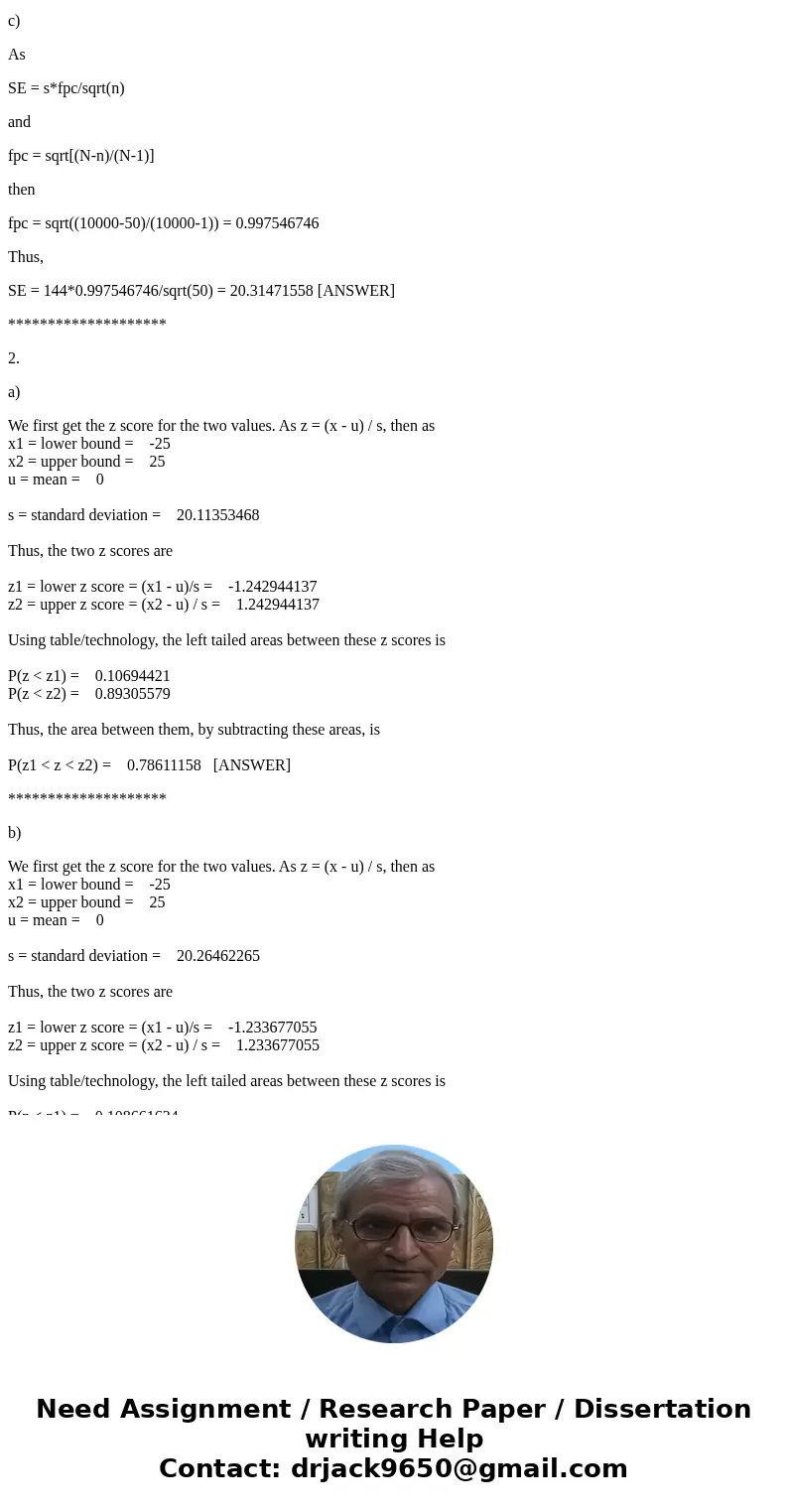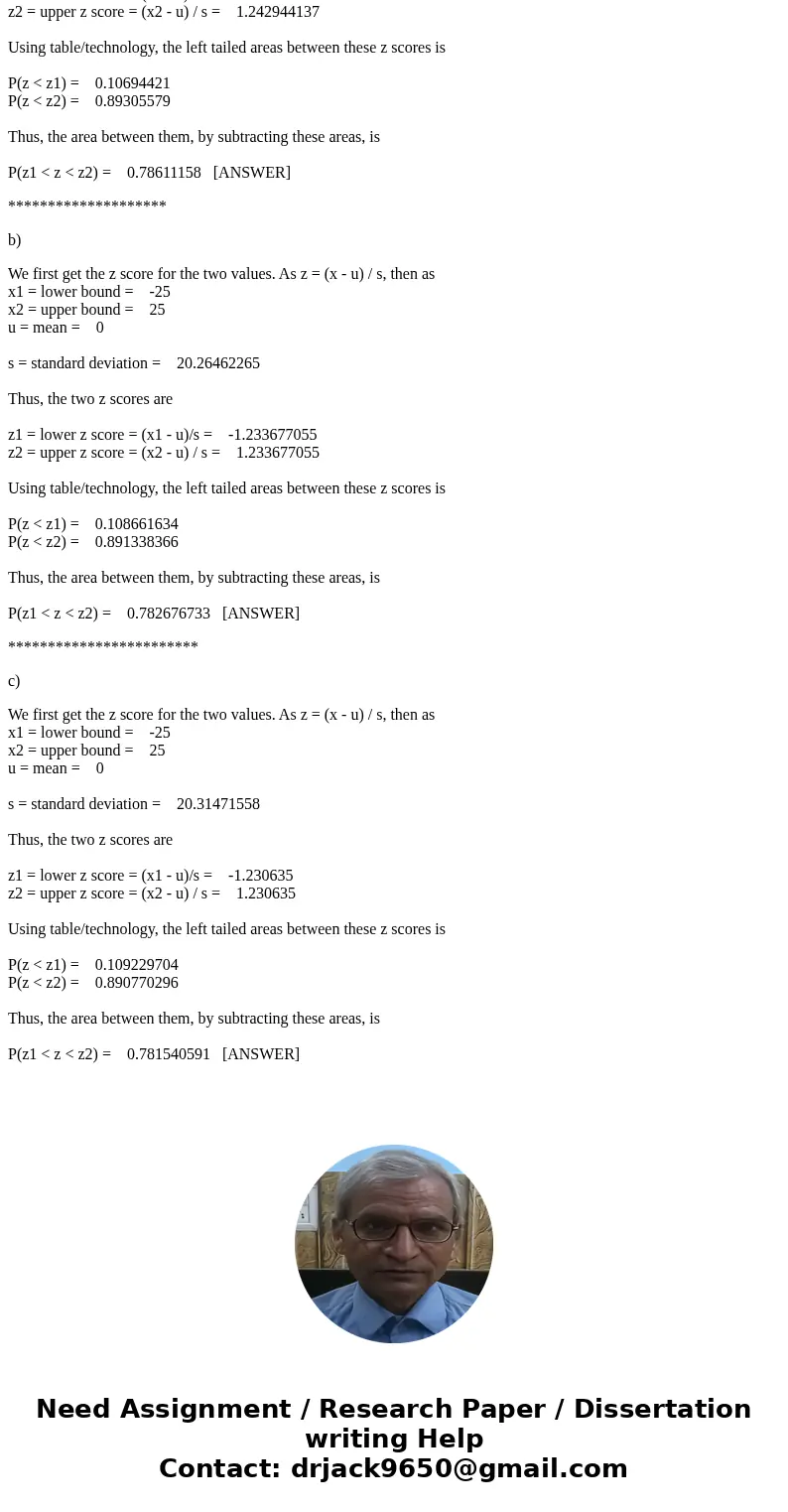Three firms carry inventories that differ in size Firm As in
Three firms carry inventories that differ in size. Firm A\'s inventory contains 2000 items, firm B\'s inventory contains 5000 items, and firm C\'s inventory contains 10,000 items. The population standard deviation for the cost of the items in each firm\'s inventory is = 144.
A statistical consultant recommends that each firm take a sample of 50 items from its inventory to provide statistically valid estimates of the average cost per item. Employees of the small firm state that because it has the smallest population, it should be able to make the estimate from a much smaller sample than that required by the larger firms. However, the consultant states that to obtain the same standard error and thus the same precision in the sample results, all firms should use the same sample size regardless of population size.
Using the finite population correction factor, compute the standard error for each of the three firms given a sample of size 50 (to 2 decimals).
What is the probability that for each firm the sample mean will be within 25 of the population mean (to 4 decimals)?
| Firm A | |
| Firm B | |
| Firm C |
Solution
1.
a)
As
SE = s*fpc/sqrt(n)
and
fpc = sqrt[(N-n)/(N-1)]
then
fpc = sqrt((2000-50)/(2000-1)) = 0.987667831
Thus,
SE = 144*0.987667831/sqrt(50) = 20.11353468 [ANSWER]
******************
b)
As
SE = s*fpc/sqrt(n)
and
fpc = sqrt[(N-n)/(N-1)]
then
fpc = sqrt((5000-50)/(5000-1)) = 0.995086951
Thus,
SE = 144*0.995086951/sqrt(50) = 20.26462265 [ANSWER]
**********************
c)
As
SE = s*fpc/sqrt(n)
and
fpc = sqrt[(N-n)/(N-1)]
then
fpc = sqrt((10000-50)/(10000-1)) = 0.997546746
Thus,
SE = 144*0.997546746/sqrt(50) = 20.31471558 [ANSWER]
********************
2.
a)
We first get the z score for the two values. As z = (x - u) / s, then as
x1 = lower bound = -25
x2 = upper bound = 25
u = mean = 0
s = standard deviation = 20.11353468
Thus, the two z scores are
z1 = lower z score = (x1 - u)/s = -1.242944137
z2 = upper z score = (x2 - u) / s = 1.242944137
Using table/technology, the left tailed areas between these z scores is
P(z < z1) = 0.10694421
P(z < z2) = 0.89305579
Thus, the area between them, by subtracting these areas, is
P(z1 < z < z2) = 0.78611158 [ANSWER]
********************
b)
We first get the z score for the two values. As z = (x - u) / s, then as
x1 = lower bound = -25
x2 = upper bound = 25
u = mean = 0
s = standard deviation = 20.26462265
Thus, the two z scores are
z1 = lower z score = (x1 - u)/s = -1.233677055
z2 = upper z score = (x2 - u) / s = 1.233677055
Using table/technology, the left tailed areas between these z scores is
P(z < z1) = 0.108661634
P(z < z2) = 0.891338366
Thus, the area between them, by subtracting these areas, is
P(z1 < z < z2) = 0.782676733 [ANSWER]
************************
c)
We first get the z score for the two values. As z = (x - u) / s, then as
x1 = lower bound = -25
x2 = upper bound = 25
u = mean = 0
s = standard deviation = 20.31471558
Thus, the two z scores are
z1 = lower z score = (x1 - u)/s = -1.230635
z2 = upper z score = (x2 - u) / s = 1.230635
Using table/technology, the left tailed areas between these z scores is
P(z < z1) = 0.109229704
P(z < z2) = 0.890770296
Thus, the area between them, by subtracting these areas, is
P(z1 < z < z2) = 0.781540591 [ANSWER]



 Homework Sourse
Homework Sourse